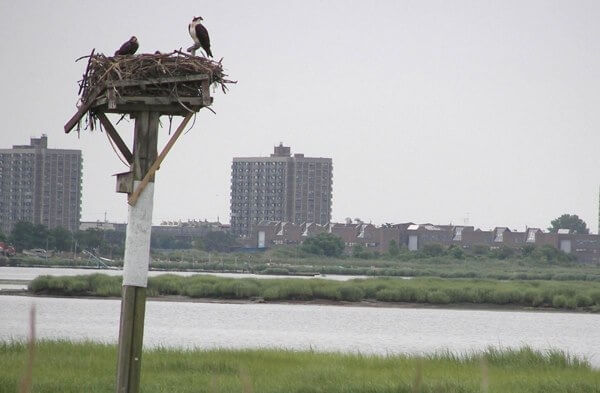By Naeisha Rose
The Rand Corporation, a global non-profit think tank, released a recent study that examines potential ways to reduce persistent tidal flooding in Jamaica Bay while improving water quality and restoring the area’s habitat.
The study, “Building Resilience in an Urban Coastal Environment: Integrated, Science-Based Planning in Jamaica Bay,” was made public July 31, and one concept focused on inlet narrowing and extensive wetland restoration.
It depicted an expansion of the bay’s habitat footprint, an increase in dissolved oxygen concentrations, and the mitigation of persistent tidal flooding with the inlet narrowing concept.
The authors used mathematical simulation models to assess potential changes in future flood risk, water quality, and ecosystem to test out their theories on improving Jamaica Bay, the study said.
Jamaica Bay is located at the southeastern end of Queens and Brooklyn, and during Hurricane Sandy in 2012, more than one-third of all buildings in the city that incurred structural damage from the storm were located in south Queens, according to the study.
In 2014, Rand initiated the study in order to prevent further damage to the Jamaica Bay area by creating flood resiliency concepts.
One idea is to enhance the natural landscape in the Rockaway Peninsula, therefore choking out the channel for floodwater in the Rockaway inlet, according to the study. Floodwaters would be prevented from entering the bay and that could reduce flood elevations and the amount of stormwater in the region.
By keeping tidal waters away from the bay, it would keep the dissolved oxygen, which is the oxygen found in water, from decreasing. Stormwater often sweeps pollutants into the bay.
With less stormwater in the bay, the aquatic life that depends on dissolved oxygen for life would be able to thrive, according to the study.
Restoring older wetlands that have been eroded over the years could help to further keep out some floodwaters from the bay during natural disasters and increase the dissolved oxygen, the study said.
The simulations did not take into consideration what it would cost to implement the inlet narrowing and wetland restoration concept. But the authors said if these concepts were implemented, they estimated the bay could be protected for 25 to 50 years.
The study was authored by Jordan Fischbach, Debra Knopman, Heather Smith, Philip Orton, Eric Sanderson, Kim Fisher, Nerissa Moray, Adam Friedberg and Adam Parris,
Reach reporter Naeisha Rose by e-mail at nrose



































